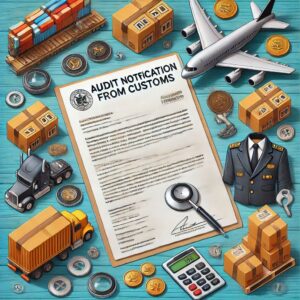Long-distance hauls pose exhilarating yet daunting challenges for logistics professionals transporting valuable cargo. As you prepare to traverse vast distances, ensuring cargo safety becomes paramount. In this guide, we explore essential strategies for securing your cargo throughout long-distance hauls, ensuring a smooth journey.
In the world of transportation and logistics, ensuring that your cargo arrives safely and intact at its destination is paramount. Whether you’re transporting goods across the country or around the globe, proper cargo securing techniques are essential to prevent damage, loss, or accidents along the way. In this blog post, we’ll explore some essential tips for securing your cargo during long-distance hauls.
Long-Distance Hauls in general
The long-distance hauls, also known as over-the-road (OTR) or long-distance trucking, generally involve cargo transportation over distances greater than 250 miles. However, many drivers cover more than that, logging 1,000 miles or more across several states and even into Canada or Mexico. This type of transportation is crucial for moving goods between major cities and demands close management to ensure the most efficient transportation. It’s what ends geographical limitations, enabling your business to reach customers across the globe. Here are the essential tips for long-distance hauls shipments:
1. Understand Your Cargo: Before you even begin the loading process, it’s crucial to understand the nature of the cargo you’re transporting. Consider factors such as weight, size, fragility, and any special handling requirements. This knowledge will inform your approach to securing the cargo effectively.
2. Use Quality Packaging: Invest in high-quality packaging materials that can withstand the rigors of long-distance transportation. Strong, durable boxes, crates, and pallets will provide a solid foundation for securing your cargo and protecting it from damage during transit.
3. Choose the Right Restraints: Depending on the type of cargo you’re transporting, you’ll need to select appropriate restraints to keep it in place during the journey. This may include straps, chains, ropes, or nets. Make sure to use restraints that are rated for the weight and size of your cargo and comply with relevant safety regulations.
Subscribe to the Ex-works24/7 newsletter
4. Distribute Weight Evenly: Proper weight distribution is crucial for maintaining stability and balance during transportation. Distribute heavy items evenly across the cargo space and avoid overloading one side of the vehicle. This will help prevent shifting and tipping during transit.
5. Secure Loose Items: Any loose items within your cargo should be securely fastened or contained to prevent them from moving around during transit. Use packing materials such as bubble wrap, foam peanuts, or packing paper to fill empty spaces and cushion fragile items.
6. Inspect and Adjust Regularly: Once your cargo is loaded and secured, it’s essential to conduct regular inspections throughout the journey. Check for signs of shifting, loosening, or damage to restraints or packaging. Make any necessary adjustments to ensure that your cargo remains secure and stable.
7. Follow Safety Regulations: Finally, always adhere to relevant safety regulations and guidelines for cargo securing. Familiarize yourself with local, national, and international regulations governing cargo transportation and ensure compliance to avoid fines, penalties, or accidents.
Types of Long-Distance Hauls transportation
Land Freight: Automobile freight stands as the predominant form of long-haul transportation. Renowned for its cost-effectiveness, adaptability, and straightforwardness, it efficiently transports goods across neighboring regions and nations. Cars and trucks offer considerable land coverage, except for specialized or oversized cargo like industrial equipment and large structures. Additionally, vehicle movements are easily monitored and managed, facilitated by modern logistics software enabling real-time adjustments to routes and delivery schedules.
Rail Freight: The railway freight, restricted to areas with railway tracks, is commonly integrated with road freight. Trains excel in transporting petroleum products, oversized items, and bulk or liquid cargo, especially over lengthy distances impractical for road transport. However, railway freight faces numerous regulations and regulations, resulting in unpredictable travel times. Factors such as wagon shortages and haul downtime can lead to significant delivery delays.
Water freight: This classification encompasses river and ocean freight. Water transport boasts significant carrying capacity and the ability to cover vast distances, enhancing efficiency. River freight primarily serves regional transportation of building materials, while sea freight facilitates international delivery of large consignments and oversized items. However, drawbacks of water freight include extended travel duration and susceptibility to meteorological and geographical factors. Ship routes are meticulously planned considering currents, winds, and weather conditions, with sudden storms potentially causing delivery delays of several weeks.
Air freight: Air freight stands as the costliest yet swiftest cargo transportation method, reserved for scenarios demanding rapid delivery. Consequently, perishable goods, small items, valuables, and mail predominantly utilize air transport. Stringent requirements govern the weight and dimensions of air cargo, with geographical accessibility limited to cities hosting airports.
Conclusion: By following these essential tips for securing your cargo during long-distance hauls, you can help ensure that your goods arrive safely and intact at their destination. Investing time and effort into proper cargo securing techniques is an investment in the safety, integrity, and success of your transportation operations.
Frequently
Asked Questions
- Take regular breaks: Stop every 2–3 hours to stretch, hydrate, and rest your eyes. This helps prevent fatigue and improves focus.
- Sleep before the trip: Ensure you're well-rested before starting your drive. Drowsy driving can be just as dangerous as impaired driving.
- Caffeine and snacks: A moderate amount of caffeine (like coffee) can help, but don't overdo it. Healthy snacks like nuts or fruit can provide steady energy.
- Rotate drivers (if possible): If you have another driver with you, switch off at regular intervals to give each other a break and keep the drive fresh.
- Engage your mind: Listen to podcasts, audiobooks, or music to keep your mind active. Avoid long stretches of silence or monotonous radio stations that might contribute to drowsiness.
- Pre-trip inspection: Before heading out, thoroughly check your vehicle, including tires, brakes, oil, coolant, lights, and wipers. If something feels off, get it checked by a professional.
- Pack essential supplies: Bring a toolkit, a spare tire, jack, jumper cables, flashlight, first aid kit, and extra fluids (oil, coolant, windshield washer).
- Comfort items: For comfort, consider adjusting your seat and steering wheel so you can maintain a natural posture. Bring along items like neck pillows, seat cushions, or even lumbar support if needed.
- Fuel efficiency: Ensure your tires are properly inflated and that your vehicle is tuned up for optimal fuel efficiency. Plan fuel stops ahead of time to avoid running low in remote areas.
- Use navigation apps: Apps like Google Maps, Waze, or truck-specific GPS apps (for commercial haulers) provide real-time traffic updates and road conditions. These can help you avoid construction zones, accidents, or high-traffic areas.
- Know your stops: Plan your fuel, food, and restroom stops in advance. Look up truck stops, rest areas, or other safe locations along your route.
- Be aware of weather and road conditions: Check the weather forecast and any possible road closures ahead of time, especially in winter or storm-prone areas.
- Avoid rush hours: Try to avoid driving through major cities during peak traffic times (usually morning and evening rush hours). Plan your driving around these windows when possible.
- Use high beams when possible: High beams can help you see better on dark, unlit roads, but be sure to switch to low beams when approaching other vehicles.
- Stay well-rested: Driving at night can be more tiring, so ensure you've had sufficient rest before taking on a night shift. Fatigue can hit faster during nighttime hours.
- Watch for wildlife: In rural or mountainous areas, animals like deer or moose are more likely to be active during the night. Be extra cautious on rural roads, particularly near forests or fields.
- Take extra caution in fog or rain: Reduced visibility at night can be compounded by weather conditions. Slow down, keep a safe distance, and use your wipers and fog lights if necessary.
- Stay hydrated and eat balanced meals: Dehydration and poor eating habits can lead to fatigue and sluggishness. Drink plenty of water, and choose healthy, energy-boosting foods like fruit, nuts, and whole grains. Avoid heavy, greasy meals that might make you feel sluggish.
- Stretch and move regularly: Sitting for long periods can cause muscle stiffness and blood circulation problems. Make sure to stretch your legs and walk around every couple of hours.
- Take care of your eyes: Staring at the road for hours can strain your eyes. Every 30 minutes, look away from the road and focus on something at a distance to reduce eye strain.
- Manage stress: Long drives can be stressful, especially if you're dealing with traffic or deadlines. Practice deep breathing, listen to relaxing music, or take small breaks to calm your nerves and stay focused.




